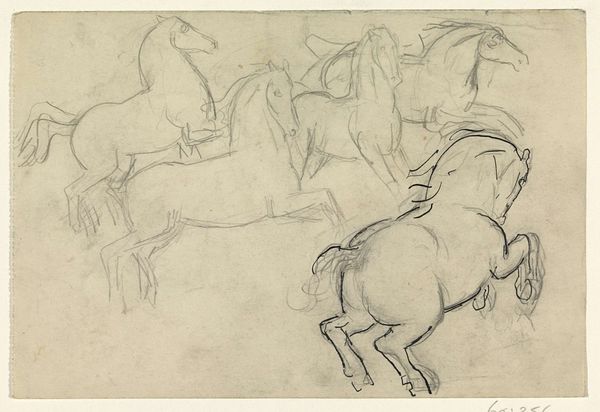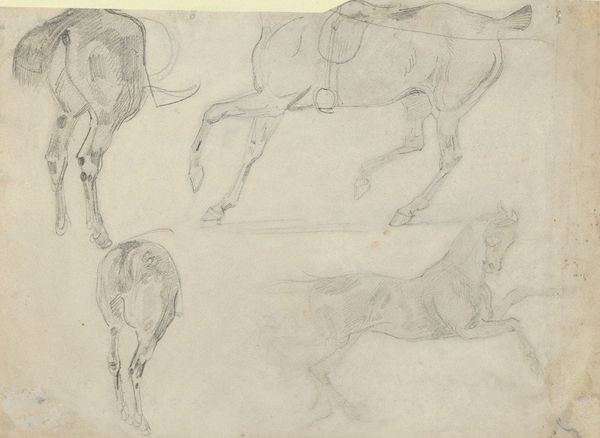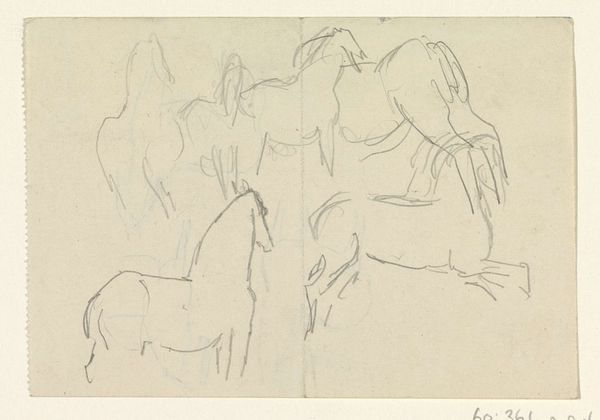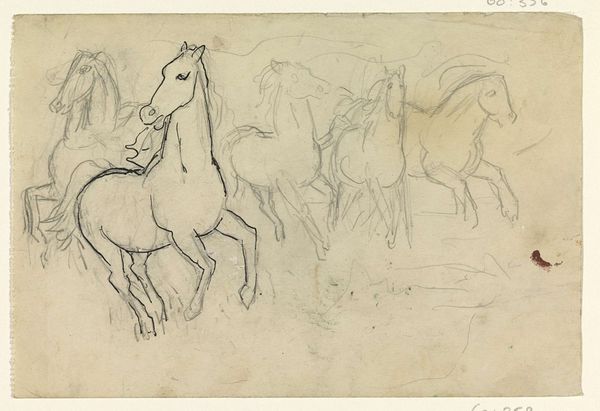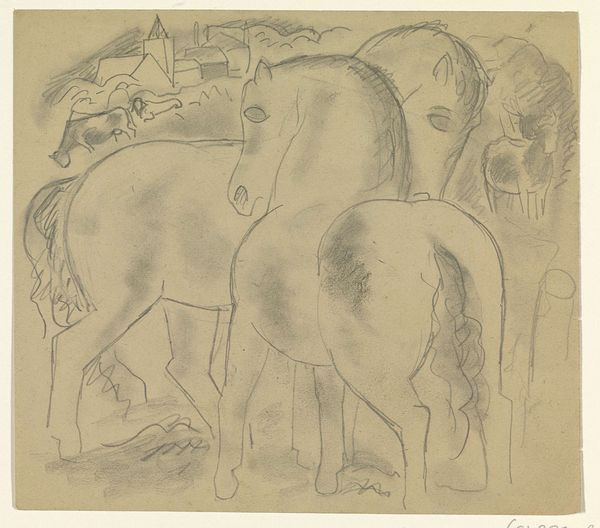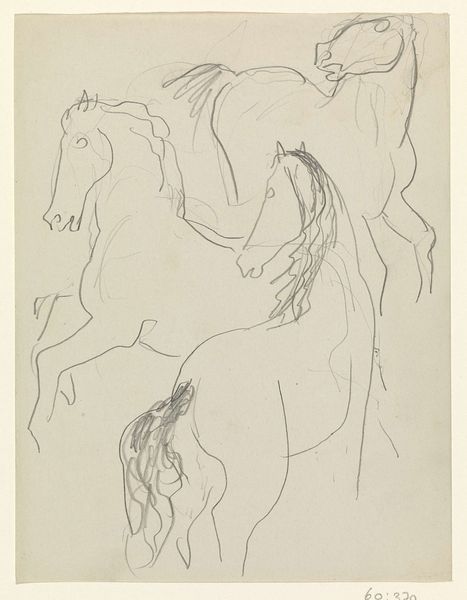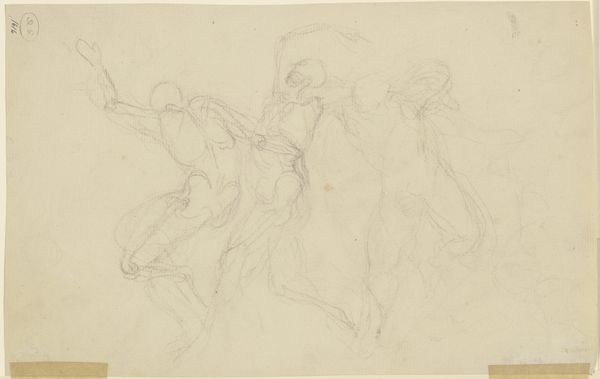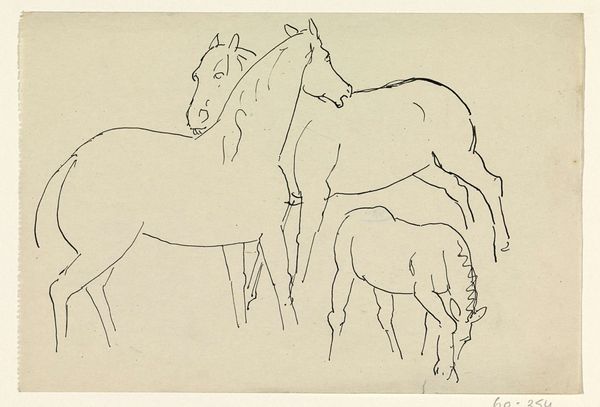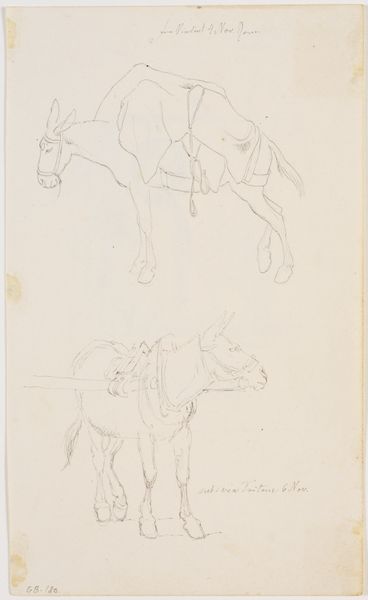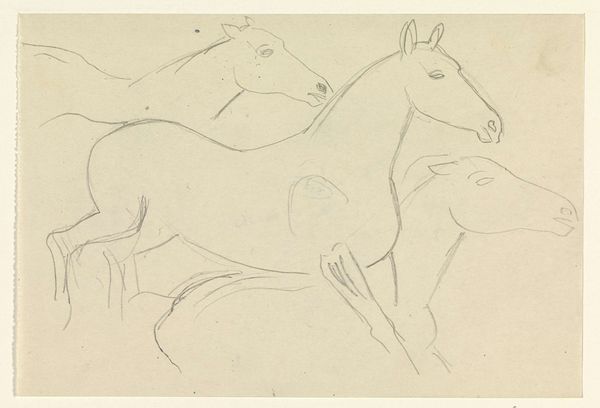
drawing, pencil
#
drawing
#
landscape
#
figuration
#
pencil
Dimensions: height 136 mm, width 202 mm
Copyright: Rijks Museum: Open Domain
Editor: Here we have Leo Gestel’s “Galopperende paarden,” dating from 1891 to 1941, created with pencil on paper. There’s an energy in these horses, even though it's just a sketch. It's captivating. How do you interpret this work, especially concerning its materials? Curator: Consider the economic context of pencil and paper at the time. While seemingly simple, their accessibility played a key role in democratizing artmaking. Gestel, through the act of drawing, engages with the industrialized production of these materials. The pencil itself—its graphite mined, processed, encased in wood—represents a specific type of labor. What does the medium itself tell us? Editor: That the choice of materials isn’t neutral… almost subversive. But why horses? Curator: Think about the social role of horses. In this era, they are not only symbols of wealth and power but also essential for transportation, agriculture, even warfare. Gestel might be commenting on the relationship between nature, labor, and the accelerating pace of modern life as it becomes industrialized. Does this resonate for you? Editor: Yes, the sketch feels like an examination of raw energy both animal and mechanical... linked. Gestel also plays with perception in motion, perhaps suggesting a move toward mechanization. So the rough marks with an ordinary pencil… almost a deconstruction of what horse-power meant. Curator: Exactly. He questions established conventions by portraying a classical theme with readily available, "lowly" materials. His method and medium unite fine art and everyday realities into a singular, compelling composition. Editor: This shifted my perception of Gestel’s choice of medium—it’s so much more than “just a sketch.” Thank you for the insights! Curator: A new consideration on labor changed my perspective, too.
Comments
No comments
Be the first to comment and join the conversation on the ultimate creative platform.
